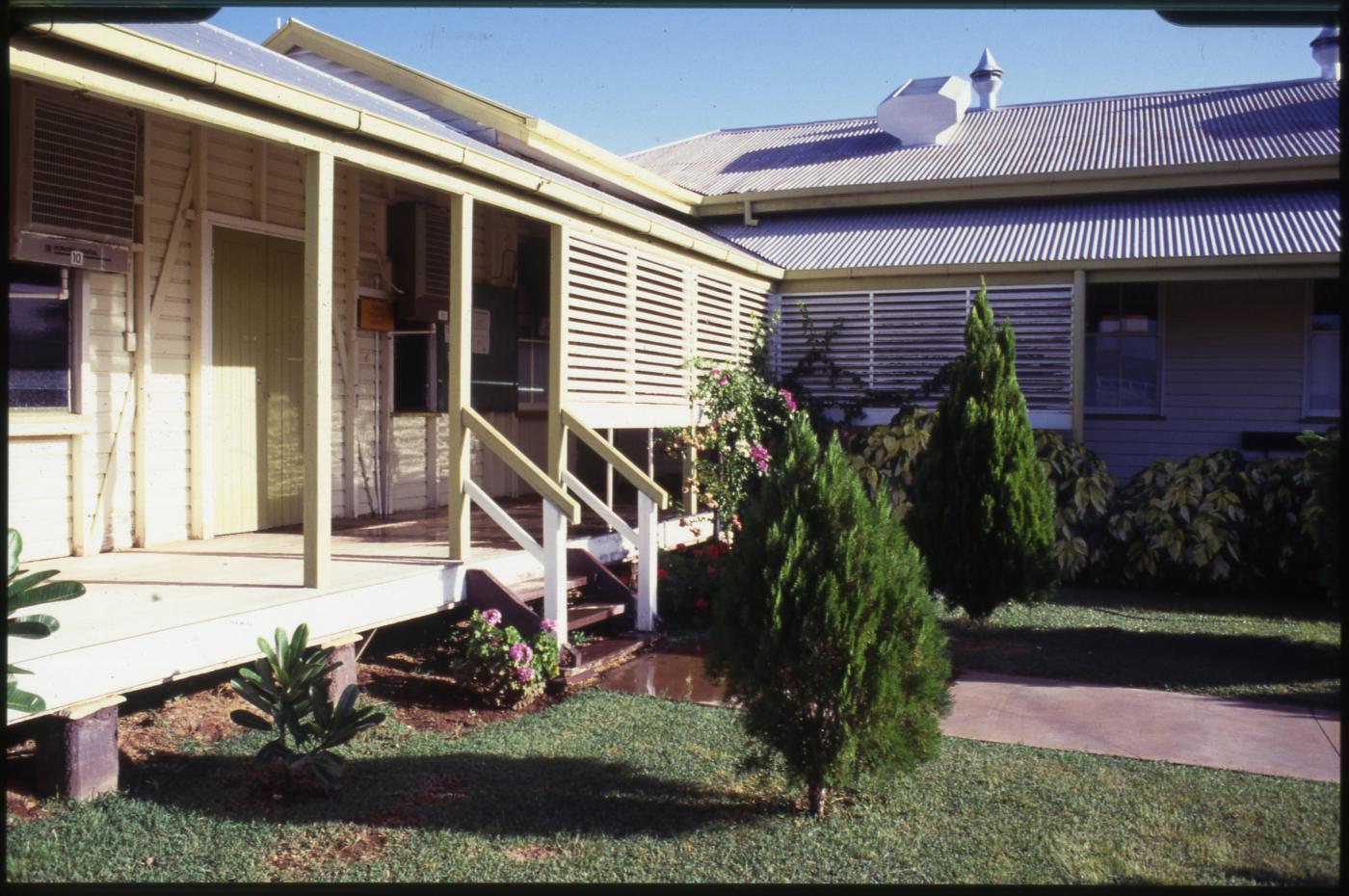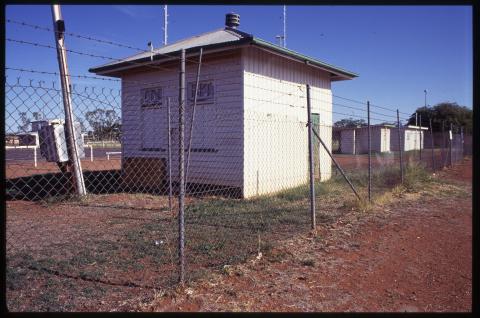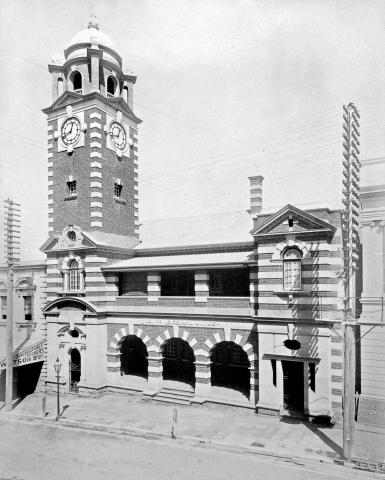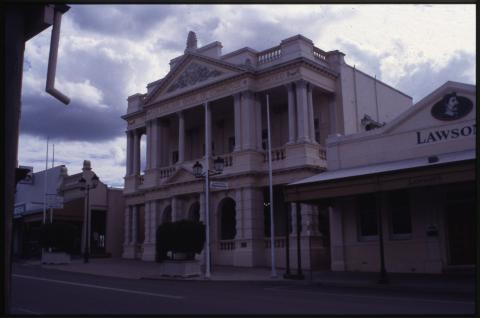
- News of the day
-
Townsville Daily Bulletin, Saturday 1 June 1929, page 13
CLONCURRY NOTES.
CLONCURRY. May 28.
At the sittings of the Circuit Court which opened here last Tuesday, the 21st inst, three cases were set down for trial. The first was against L. A. Sharpe, for alleged stealing goods in transit, at Dajarra, on 11th April last. Mr. B. Ross conducted the Crown case, and accused was undefended. The chief Crown witness, constable Daniel O'Sullivan, proved one of the best police witnesses ever heard here, and his evidence releaved him in the light of an adept tracker with a sound knowledge of bushcraft. He stated that in consequence of a complaint received he examined a truck in the railway yards at Dajarra on the morning of the 11th April, found tracks which he followed for a distance of 2 1/2 miles in an easterly direction to where he found accused asleep on the ground wrapped in his blankets. On accused he found a revolver loaded in one chamber. He took possession of this, as accused had no license. About 150 yards away from defendant's camp he found a quantity of goods, and after a retirement of a few hours the Jury disagreed. Accused was remanded for trial at the next sittings of the court in Cloncurry in July. Bail of self £80 and two sureties of £40 each was allowed, but was not forthcoming.
The Crown then presented an indictment against J. W. Walsh, for the alleged theft of a tin of benzine on February 14th last from a truck in the Cloncurry railway yards. Mr V. Hallinan appeared for the accused. For the Crown four lads deposed that they saw accused take the tin of benzine from the truck and convey it to his house about 2 chains away. A statement alleged to have been given by accused to acting sergeant H. Argus, played a big part in the case. The defence alleged that the sergeant obtained the statement by the use of unfair tactics, but His Honour Judge Douglas told the jury in no uncertain manner that he did not believe that for a moment. His Honour during the case commented on the fact that under the lax manner in which the business of the railway department is conducted (according to the evidence it is possible for a railway employee to be paid for a shift that he does not actually work. For the defence evidence was given that accused during the afternoon on which the offence was alleged to have been committed, had been at his home the whole of the afternoon, and it was impossible for him to have left the house without the knowledge of those who were with him. Mr Hallinan pointed out the danger of taking the evidence of young boys seriously when a man's liberty was at stake.
The jury evidence took this view, as they found accused not guilty after four hours retirement.
In the case against two Chinese, Chong Sang and Kong Bow, Mr. K. Townley, for the defence, made his first appearance here as a barrister. It was alleged against the two accused that they corruptly offered senior sergeant Cahalane a sum of money to allow Kong Bow to “run a little game” at Kong's sumptuous boarding house. The defence set up was that the accused, owing to their pathetically imperfect knowledge of English were misunderstood by the senior sergeant, they merely wished to take out a license for a hoarding house. Kong Bow has resided in Australia for 52 years, yet the unfortunate man could not understand one word of English. How he has managed to carry on business as a jewellet in different towns in N.Q. for a lifetime is beyond comprehension. Chong was not quite so hot, he did make an attempt to answer a few questions. The services of an interpreter had to be requisitioned in both cases. Kon “no savee” fairly brought down the house. Mr Townley did not for a moment suggest that the police evidence was wrong, he merely suggested that his unfortunate clients did not know what they were doing. So successfully did he put this aspect of the case before the jury that they found the two accused not guilty after a few minutes' retirement. This concluded the sittings.
- Background
-
The present Cloncurry Court House is the second on site and was erected in stages between 1897 and 1961.
The Cloncurry district was subject to pastoral settlement from the mid-1860s. Access to artesian water from the 1890s enabled the grazing of sheep and cattle to succeed despite severe drought and in what is essentially a semi-arid environment.
The administration of justice was brought to sparsely settled and isolated areas by means of small court houses combined with, or attached to, police stations and served by visiting magistrates. Cloncurry was designated a District Court Area in 1889, but almost a decade passed before a new court house was completed in July 1898 by Murray and Litster at a cost of £728. This court house was a rectangular, two-roomed, timber-framed structure with exposed studwork and a wide verandah to all four sides.
In the first two decades of the 20th century, Cloncurry prospered with the boom in copper prices and the corresponding increase in copper mining activity in the district. In 1906 Cloncurry became a Circuit Court centre. In 1907 the size of the court complex was more than doubled with the addition of a new court room and offices for the judge, barristers, court warden and jurors. The existing court was shifted slightly to adjoin the new section and became offices for the Clerk of Petty Sessions and for the government surveyor. This addition gave the building a new elevation to Sheaffe Street.
In 1914 further alterations were made to provide for officers from other government departments, including the land commissioner, mining registrar and inspector of machinery. A new hip-roofed wing was constructed at the southern end of the building which contained two rooms and extended the western verandah. A separate, 2 roomed structure was linked to the rear verandah by a covered way and accommodated drafting and records.
In 1953 a toilet block and strong room was added and in 1961 the last major addition occurred when a four-roomed wing was added to the 1914 section. This was built under the same roofline and continued the weatherboard cladding and existing window hood detail. The inspectorship of the police district was transferred from Cloncurry in 1963 as Mt Isa had developed to become the more important regional centre, however the court continues in use. In 1966 a new station, cells and quarters were constructed. Conservation work on the courthouse was undertaken in 1977 with state government funding. It continues to operate for its original purpose.
The Court House was added to the Queensland Heritage Register 21 October 1992.
Courtesy of the Queensland Heritage Register.
/140.5055689,-20.7044558,7/450x450@2x.png?access_token=pk.eyJ1IjoicXNhLWRpc2NvLXFsZCIsImEiOiJjamJmdTgyZXEyeWNjMnlxZm8xcmtieHgxIn0.lmT9J5tTPKGuuccQgCVSAg)



